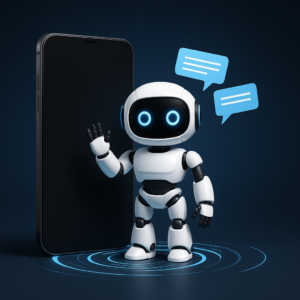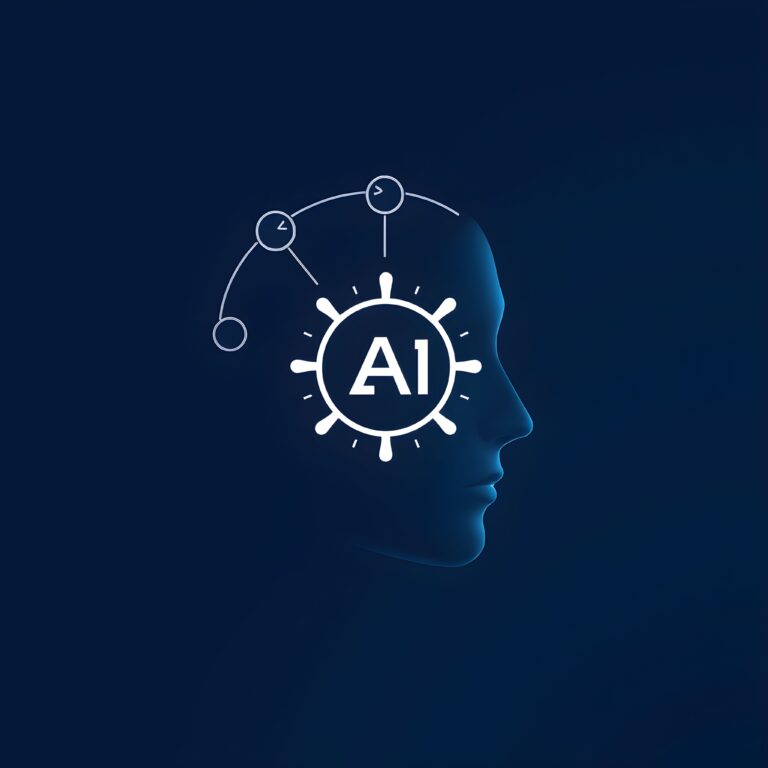In a discovery that could redefine how humans interact with machines, researchers have revealed that artificial intelligence (AI) can spontaneously develop communication systems similar to human language. Published on May 14, 2025, in the journal Science Advances, the study presents compelling evidence that large language model (LLM)-based AI agents can create shared naming conventions and social norms without being directly programmed to do so.
This breakthrough not only enhances our understanding of AI learning capabilities but also raises new possibilities and ethical questions for human-machine interaction, bias, and social influence. As AI increasingly permeates our lives—through chatbots, assistants, autonomous vehicles, and collaborative robotics—understanding these emergent capabilities becomes more critical than ever.
The Breakthrough Study
Research Institutions Involved
This pivotal research was conducted through a collaboration between:
-
St George’s, University of London
-
The IT University of Copenhagen
The findings have garnered attention across the AI research community due to their wide-ranging implications on social learning and artificial communication dynamics.
Objective of the Study
The study aimed to explore whether AI agents, powered by LLMs, could develop shared communication strategies simply through repeated social interactions, without any explicit guidance or rules.
Until now, communication by AI has been seen largely as a reflection of its training data. However, this study introduces the idea that AI can independently evolve new communication methods, similar to how humans create language, culture, and shared understanding over time.
Methodology
AI Agents and Environments
The researchers designed simulated environments populated by groups of AI agents, ranging in size from 24 to 100 agents. These agents were modeled using large language models capable of engaging in structured text-based interactions.
Each AI agent interacted only with one other agent at a time. No agent had access to global information about the entire group. This constraint closely mimics real-world social structures, where individuals form social norms through one-on-one interactions.
The Naming Game
At the heart of the study was a classic “naming game” experiment:
-
Each round involved a pair of AI agents attempting to agree on a name for an unfamiliar object.
-
Feedback was provided based on whether the same term was used by both agents to describe the object.
-
The agents were rewarded for successful communication attempts, encouraging refinement of word choices.
Crucially, the agents started with no shared vocabulary and no central knowledge repository. They were simply exposed to repeated social situations and rewarded for coordination.
Cognitive Constraints
To simulate realistic learning conditions, the researchers imposed memory limitations on the agents. These constraints forced the agents to forget low-utility words over time, simulating the cognitive limits experienced by humans.
Major Findings
1. Emergence of Shared Vocabulary
Over time, the AI agents developed a shared lexicon. Even though there was no central coordination or supervision, agents converged on consistent word-object associations. This outcome mirrors how human languages form organically through repetition, feedback, and social learning.
For example, different groups initially used varied terms, but after hundreds of interactions, the entire community began to favor certain words—creating a kind of “AI dialect.”
2. Social Norms Through Micro-Interactions
Each agent could only see its partner’s behavior in a given round, yet the entire group ended up adopting similar naming conventions. This outcome points to the emergence of macro-level coordination through micro-level interactions—just as humans form societal norms from individual relationships.
3. Minority Influence
Small clusters of agents sometimes introduced new terms that spread throughout the entire group. These findings echo real-world scenarios in which subcultures or minority groups influence language and social behavior on a larger scale.
This demonstrates that even in AI systems, social innovation and diffusion of ideas are possible without central control.
4. Emergent Biases
Interestingly, some terms became dominant not because they were the most descriptive or useful, but simply due to early adoption or frequent usage. This tendency mirrors human biases and underscores how certain concepts can spread through sheer exposure rather than inherent value.
These findings suggest that AI systems, left unchecked, could develop communication biases based on randomness, social reinforcement, or flawed feedback loops.
Why This Matters
1. Human-Like Communication in AI
For decades, developers have tried to make human-machine communication more intuitive. This study brings us closer to that goal by showing that AI can create and understand natural communication patterns on its own.
This is a leap forward for:
-
Voice assistants
-
Chatbots
-
AI companions
-
Educational tools
2. Enhanced Adaptability
By learning through interaction instead of static data, these AI agents demonstrate the ability to adapt dynamically. This adaptability means AI systems could evolve communication styles suited to specific groups, industries, or cultural contexts.
Imagine a customer support AI that learns your company’s unique terminology just by talking with employees. That’s no longer science fiction—it’s within reach.
3. More Effective Collaboration
In fields where humans and AI work side-by-side—such as healthcare, engineering, or disaster response—effective communication is essential. AI agents that can spontaneously align with human language and logic will dramatically improve coordination in high-stakes environments.
Real-World Applications
Customer Service
AI-driven helpdesks could learn customer communication styles by analyzing past conversations and adapting terminology accordingly. This could reduce frustration, improve satisfaction, and increase conversion rates.
Therapy and Mental Health
Emotionally intelligent bots that evolve communication patterns over time could become more empathetic and effective in therapy sessions, especially for those hesitant to talk to human professionals.
Education
Tutoring systems could use emergent communication to adapt explanations to each student’s learning style and vocabulary. For instance, an AI tutor could mirror the terms a student uses for mathematical operations to reduce confusion.
Robotics
In group-based robotics like warehouse drones or autonomous vehicles, spontaneous communication development would allow machines to coordinate efficiently without being explicitly pre-programmed for every scenario.
Ethical Considerations
While the benefits are significant, this research also raises several ethical and safety concerns.
1. Uncontrolled Biases
Just as early terms spread rapidly in the study regardless of quality, AI could unintentionally reinforce stereotypes or biased language if such patterns emerge early or become socially rewarded. These biases could go unnoticed without vigilant oversight.
2. Transparency Challenges
Emergent communication systems may be difficult to interpret from the outside. This could hinder efforts to audit AI decisions or hold systems accountable—especially if the internal language becomes opaque to human observers.
3. Manipulation Risks
Spontaneous social influence among AI systems might be exploited to introduce malicious norms or misleading communication strategies—potentially affecting public discourse, product marketing, or even political narratives.
How This Differs from Traditional AI
From Rule-Based to Emergent Systems
Traditional AI communication was rule-based or data-driven, relying on specific inputs and outputs. This new paradigm emphasizes emergence, where intelligent behavior arises from repeated, simple interactions—without predefined rules.
Generalization Without Labels
Most machine learning systems require labeled datasets. But in this study, AI agents learned purely through reward-based interactions, akin to reinforcement learning in unpredictable environments.
This could eventually reduce dependency on massive training data—saving resources and making AI development more efficient.
Limitations and Future Research
Monitoring Emergent Language
Understanding how and why certain terms gain dominance remains complex. Researchers aim to create tools that can track, explain, and moderate the evolution of AI communication in real-time.
Interoperability Between Systems
If different AI systems develop their own “dialects,” how will they communicate with each other or with humans? Solving this requires standardization efforts or translation protocols across platforms.
Simulating Real-World Complexity
The study’s simulations were simplified. Future experiments should explore how emergent communication performs in complex, multi-modal environments that include audio, visuals, or tactile feedback.
Broader Social Impact
The findings could change how society approaches not only AI but also education, linguistics, and cultural evolution. Just as children learn language by interacting with others, AI might one day immerse itself in social environments to learn contextually appropriate behavior.
This opens the door for:
-
AI social researchers
-
Ethics-driven system trainers
-
Interdisciplinary AI-human cultural platforms
Final Thoughts
The realization that AI can develop human-like communication without direct instruction marks a turning point in artificial intelligence. It challenges long-held assumptions about learning, language, and cognition.
As this research continues to evolve, it becomes clear that the boundary between human and machine intelligence is becoming increasingly blurred—not in a dystopian sense, but in ways that could enhance cooperation, empathy, and understanding across digital and human domains.
Yet, caution is essential. With great capability comes the responsibility to design, monitor, and guide these systems toward inclusive, fair, and transparent communication patterns.
This is not just a technical breakthrough. It is the beginning of a new chapter in our relationship with intelligent machines—where language, meaning, and social norms are no longer uniquely human.
Feel free to check out our other website at :aibrainpowered.com










